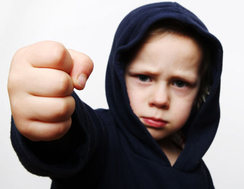 I wrote a post a couple of weeks ago about Mazzy's delightful hitting habit.
I wrote a post a couple of weeks ago about Mazzy's delightful hitting habit.
Since then, we seem to have gotten it under control, which could either be due to our superior parenting skills or our daughter getting bored and moving onto something else.
I like to think it's the former. And if that's the case, than as usual, I owe Dr. B (our resident early childhood development specialist) a debt of gratitude.
She has been coaching me on method's to change Mazzy's aggressive ways and even agreed to write out her Patented 5 Step Approach for you all today.
Judging by the comments under the hitting habit post, I'm not the only one who could use some coaching in this area.
I hope Dr. B helps (even though her method is not really patented).
Because parenthood is tough enough without your toddler trying to give you a shiner.
——————————————–
Many children display aggressive behaviors such as hitting in response to specific triggers or to test out different behavior to see how others will react.
The challenge for most parents is that what may come naturally in reaction to this behavior (i.e, a BIG reaction including yelling and punishing the offending behavior) is often the opposite of what works best.
The problem with reacting harshly and negatively to aggressive acts is that it may stop the behavior momentarily but it is an ineffective way of changing behavior in the long-term.
In order to effectively shape or change a behavior, it is critical to teach your child what TO DO instead and to reward positive behavior (especially behavior that is the positive opposite of the inappropriate behavior).
When your child hits, instead of thinking he/she is behaving badly, view this behavior as a skill deficit and teach them something more appropriate to do instead.
Below is a five-step solution to help change aggressive behavior into pro-social behavior:
1) Stop the behavior: Remove your child from the situation or block their hands from making contact with you or another child. Say, “Stop” firmly but not with anger.
2) Stay calm and in control: When we react with anger at our children, we are essentially modeling the negative behavior that we want to eliminate. Yelling or hitting in anger is modeling for our children that these are acceptable ways to behave in response to situations that make us angry. Alternatively, they may be hitting to get our attention and then we are rewarding the behavior by teaching them that hitting is a powerful way to get it.
3) Acknowledge how your child might be feeling and explain why you stopped the behavior: Some children hit playfully, while other children hit when they are mad or frustrated. Label these emotions for your child and explain that it is okay to feel mad or silly but that it is not okay to hit (e.g., "You feel mad. It’s okay to feel mad but it’s not okay to hit. Hitting hurts.") You can also explain how the behavior impacts others to teach empathy (e.g., "I don’t like that. I feel angry (or sad) because that hurt me. Hitting hurts.") Explain that hands are not for hitting or hurting others.
4) Tell and show your child what TO DO: Use incidents of hitting to teach appropriate behavior. Your child may need to learn to touch people gently and/or to use words such as “give me please” to request items from another person, “Help me” to prevent frustration, and/or “Stop” to indicate that a peer or adult is bothering him. For example, show your child how to touch you gently or how to give you or others a high 5 (which may fulfill the same need for your child but in an appropriate way).
5) Immediately praise the appropriate behavior: Reward your child for showing or imitating the appropriate behavior after you intervene. When your child is able to say the words you told them or touch you gently after you have shown them what a nice or gentle touch looks like, provide them with plenty of enthusiastic and descriptive praise such as “You touched mom so nicely!” “Great job using your words!”
These 5 tips will help you shape and change your child’s behavior; however, sometimes the aggressive behavior continues and additional consequences and more explicit teaching is necessary.
More intensive interventions require a consistent approach used by all family members involving teaching the child what to do and what not to do and implementing positive consequences for appropriate behavior and/or negative consequences for inappropriate behavior.
For instance, you may need to (1) give your child a tangible reward when they show the appropriate behavior (e.g., give them a special treat when they use their words to ask for a toy instead of hitting a sibling); (2) take away the item or activity they are playing at the time the behavior occurs; and/or (3) give your child a brief time away from the situation until they calm down.
Also, consider reading books to your child about hitting (e.g., Hands Are Not for Hitting by Martine Agassi Ph.D. and Marieka Heinlen, No Hitting!
by Karen Katz, or It's Time to Start Using Your Words
by Lawrence Shapiro) and referring to the language used in the books at times when your child exhibits the behavior.
It is also beneficial to give one warning describing the consequence for repeating the behavior to give your child an opportunity to control their behavior on their own; however, be careful what you say because you MUST follow through if you want to successfully extinguish the behavior. Be aware that when you use warnings and negative consequences, the behavior often gets worse before it gets better.
Finally, if your child continues to exhibit aggressive behavior on a frequent basis and you are concerned about their emotional well-being and/or social skills, talk to your pediatrician.








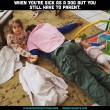





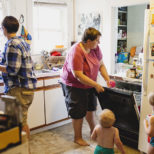
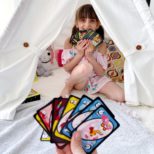


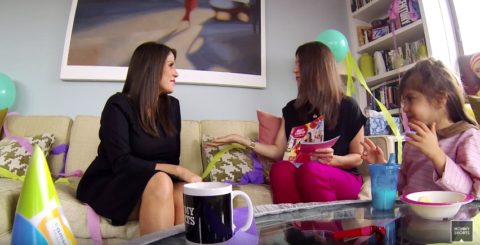






Thank you Dr B for the great advice! My toddler mostly hits out of exuberance or excitement, rather than malice, but I can definitely apply these techniques to divert the hitting to something else (high fiving is a good alternative).
I have a 2 year old daughter who is going on 16. I was ready to pull my hair out and was tired of her telling me what to do and tired of yelling at her in return. Then I came across this program smartparentreviews .com/talking-to-toddlers-review/, which was heaven sent. I saw improvements after the first lesson. It was a miracle. I was waiting for her to fight back and then there was nothing. The conflict was resolved. Wow! The program was worth every single penny.
I faced lot of challenges with my kid he won’t listen what I say and he not having food at right time, when I attend the counselling class they refereed one of product “Talking To Toddlers” it helped me how to talk with the kid and it reduced my stress fully, now my kid listen what I say and his behaviour is changed, now I am happy with my kid,
you can get the product here >>( go2l.ink/toddler )
.
I don’t know why, but your use of “my kid” and “the kid” makes me cringe.
Dr. B always gives us practical and professional advice! Are her kids angels???? Tks, I’m going to use these. I don’t want to model the behavior I’m trying to correct, so I’ll use positive reinforcement instead.
I’ve been using a mix of teaching her to touch in a nice way and apologizing when she hits. That and calmly explaining to her that “mommy doesn’t like it when you act like an asshole”. Because isn’t that what life is about? Learning to curb your tendencies toward being an asshole.
In all seriousness, the nice touch thing works like a charm. Then she feels all proud because she is being such a good girl.
BEST. COMMENT. EVER!!!! Lol “Mommy doesn’t like it when you act like an asshole.” I almost died. HAHAHA
Lmfao! Thanks for the smile! Been searching the Internet for answers…and your comment is the BEST! No, Mommy does NOT like when you act like an asshole! Lol. I’m done. No need to search further. Best comment on the web…You should publish a book. 😉
My daughter is not a hitter (thankfully, or maybe it just hasnt happened yet) but she has been on several play dates where she has been hit. When it happens i mostly stand there shocked. The other parents are mortified, and i usually just ask my daughter to give the kid whatever it is they wanted (which i get is not ideal) my daughter hasnt been hurt, but how do i handle this when it is my kid being hit? I am also nervous that she will learn to hit from these kids.
When my 1 year old was bit for the 6th time in 3 months at a day care by different children that he was the culprit. We had to teach him to give the other children more space. Sometimes when they can’t express their emotions or don’t know how to say stop they bite or hit.
Eek. I tell my son to tell the person “It hurts when you hit. I am not going to let you hurt me.” and then to walk away. He comes to me for help when he needs. To me, this method empowers my child to handle the situation himself and gives him confidence to speak for himself. I stay close and keep and eye and help when he needs me to intervene, but I like for him to handle things in a way that no ours and protects him in the world. It also doesn’t give him the mixed message that he should gratify the bad behaviours of another person, child or not, because that can send a really mixed up signal about what someone is permitted to do to have their way.
Gonna have to try these. My son hits my daughter a lot. He won’t hit any other kids, thankfully.
It’s so hard to react calmly when they are hitting. Especially when it seems like they are doing it JUST to get that reaction – the one they usually end up getting. My three-year-old is the hitter, and her brother takes it all in because he is the older one – “Be the big brother!”
I’ll try a few of these with more enthusiasm now. Thanks!
It took my toddler awhile to get it. When we were working on it, for a bit he was using his words and hitting at the same time. I have to admit it was kinda cute. He’d say, “stop doing that. I don’t like it.” while he was hitting someone. Eventually, the hitting stopped and the words remained:)
Growing up I’d never even think about hitting my parents because they would’ve put their foots up my behind! I was overall a good kid thanks to their old school parenting approach… Maybe us as parents need to get back to that old school approach instead of trying to be our kids friends? Thankfully I have not had to use spanking as a form of punishment for my 3 and 7 year old… But I’m definitely not against it. My children are pretty well behaved and polite… Thank God!! I know ideally you want to always stay calm and not get angry when your child is hitting and acting out… But these kids are smarter than we think… We need to put the fear of God in them!! 🙂 worked for me growing up… But also keep in mind.. Every child is different, and while spankings definitely kept me in check growing up.. It never worked for my sister… Taking away her toys is what hurt her the most.. You just have to see what works for your child.
I completely agree! My husband and I are very old school with how we discipline. Our parents were and we were always good kids and respectful adults. I think now days we cautle kids too much that they don’t respond to discipline and always have this feeling of entitlement. Every child is different and some are more hard headed and need the tougher discipline. My little girl is hard headed and stubborn so we need to be a little tougher one her. Parenting is so challenging lol
LOL!!! I love this!!
Growing up my parents were very loving towards me and hitting was clearly not an acceptable behavior. I hit my mom once and I got a swat on the behind, I never hit my mother intentionally again. My son did this to mommy once also, he got a good swat on the but by mom and that was the end of it. Both my son and I grew up happy and successful, and we both remember and realize that the swat was appropriate to the behavior. My daughter is trying the approach mentioned in these postings and it is not stopping the hitting when her son gets mad. A swat on the butt is not corporal punishment, beating a child is. I am still waiting to see sweet talking and explaining right and wrong be successful with a three to four year old. Loving your child and using appropriate corrective actions to bad behaviors work and your children will respect you all their lives for it.
The issue with my daughter is she hits when she is very angry and usually hits when she doesn’t want to leave where we are or she’s not ready to go to bed. We solved the going to bed issue by reading books while she is in the crib instead of out. The leaving the place we are issue still stands…and is pretty bad. Any ideas????
Thanks this are great, i’m gonna use them, i’ve been having problems with my 5 year old on this, i hope it helps!!!
Look into their years of experience in managing small business accounts so that you can get professional
advice on various financial matters. When job offers
do come and I’ll admit, some companies may fear hiring you because they
fear a former owner being an employee, negotiate the best salary you can along with the best
benefits you can for you and your family. For clients, you can target neighborhoods, communities
or even companies.
[…] Read full article here 5 Steps to Stop Your Toddler From Hitting – Mommy Shorts […]
How do I stop my 4 year old Toddler who is hitting, punching and elbowing at school?
Here is an excerpt of a really good method: https://www.mommyshorts.com/2012/04/a-5-step-approach-to-stop-your-child-from-hitting.html In order to effectively shape or change a behavior, it is critical to teach your child what TO DO instead and to reward po…
My 4 year-old daughter has always had, and still has, crying/tantrum episodes every single day. it’s humiliating. Bedtime is so stressful EVERY DAY! And this is not the only time she is out of control.
I have tried it all; routine, stories, positive reinforcement, games, etc, etc., still, nothing works. We can’t figure it out…we would appreciate your input…I’m all ears!!! Thanks!!
You are not alone. Im searching right now because our daughter has multiple meltdown tantrums every single day guaranteed.
Im at the end of my tether. Everyday i am bitten, scratched and hit numerous times. I would prefer to give her a smack on the bottom but my wife is 100% against it.
Todays fourth meltdown was because i wouldnt let her sit on the sorting bench at the grocery store. Ignored her behaviour at first then she bit me on the leg, hit me and then scratched my face and neck (drawing blood) as i picked her up off the ground to leave.
Desperately need help or im going going to lose it or leave. My wife not being on the same DISCIPLINE page as me is not helping. She gives into the tantrums and counters almost everything i do to discipline. This also creates arguments with us and the home is not a happy place.
With baby number 2 due in 2 months i need a miracle
WOW, i felt like i was reading myself explaning a situation except for the not being on the same side. We’ve tried everything and the only thing that we both agree on that seems consistant, kinda works, is we have to grab our 21month old, facing forward and put him in a hold so he cant pinch, bite or hit or (oh yeah big kicker if he doesnt get the attention he wants) decides to pick up things and theow like hes some wwf wrestler on steroids, which btw, is hilarious and hard for us my husband, myself, 2 teens, 16 & 17 and almost 4 yo) not to laugh at. I think its more shock. Its always the same too for everything. When i hold him.like this i try to be comforting, kisses, tight hold like a hug so its doesnt seem like punishment while explaining why he cant do that and have notices hubby doing the same. You say no, all 4 happen, he gets in a fight over a toy with his 4yo brother, all four happen. Weve tried everything. Never had an issue with the other 3 kids acting this way. Very frustrated. Have a hard time taking him to mommy playdates due to this. He does not discriminate. Ive never ever wished for one of my kids to hurry up and get through a stage so he can communicate better but i have for him.
My 2 yr old has always head budded and punched everything since he was a baby. Whether he’s happy or upset. Ive tried working with him but can’t get him to stop. When i block his punches and he cant hit me he starts punching himself like Mark Wahlberg in FEAR! Every one keeps telling me he’ll grow out of it but its just so annoying.
My son use to do that and once 2 days in a row he almost knocked himself out. He had a giant bruise on his forehead and I had enough. Nothing was working and seemed to be getting worse. I don’t know why I thought of it but I gave him a very special toy. It was a thomas take n play. I told him it was extra special and only for him if he didnt bang his head. I had a real heart to heart with him about it. I told him as soon as he bangs his head again it is going back up in the closet and he would earn it bavk by not banging his head. I then pulled the toy out of hiding as if it was the holy grail and handed it to him. He has other thomas toys now but that one is called thomas the toy and he still knows I will take it away. If he slips up I take it away and he can’t bang his head for 24hrs to get it back. If your son is doing it really often you might change the time span for less lile 3 hrs. He is also supose to come for hugs instead of hurting himself I recomend the books hands are not for hitting, feet are not for kicking, teeth are not for biting. We still read them. Hope this helps it worked for us
I’m really struggling to control my 14mo old sons smacking behaviour. I’ve tried everything. The firm “no hitting” followed by placing him down. I’ve tried timeout in his cot. I’ve tried ignoring him. No luck.
Also, another one is screaming. He has a thing of screaming. When I’m not around, he doesn’t scream.
And ideas please? I’m a single mum and I’m struggling with his behavior lately :'(
I pay a quick visit each day a few sites and sites to read articles
or reviews, except this webpage presents feature based content.
Good advice but I tried all this and everything but my 3 .5 year old is still out of control ..she hit a, scratches me and screams non stop .. I tried talking to her , positive rewards. Nothing is sr working ! No I don’t give in , even though everyone around me tells me it’s all my fault and she’s bad cus of me :(. I think I’m going to get her tested ,i know she’s 3, but she cries everyday all day
That is really interesting, You’re an overly professional blogger.
I have joined your rss feed and stay up for looking for
extra of your fantastic post. Additionally, I’ve shared
your web site in my social networks
If some one wishes to be updated with newest technologies therefore he must be go to see this web site and be up to date daily.
Hello to every one, the contents existing
at this website are really remarkable for people experience,
well, keep up the good work fellows.
Very shortly this site will be famous amid all blog visitors, due to
it’s pleasant content
[…] 5 Steps to stop your toddler from hitting | Mommy Shorts […]
This sh*t does not work. I’ve been practicing this nice parent mentality for over a year. I don’t put hands on my kid but I’m still get hit, bit and scratched. My patience is running thin.
Here are 7 Practical Tips to Control Temper Tantrums in Pre-schoolers
https://www.parentcircle.com/article/7-practical-tips-to-control-temper-tantrums-in-pre-schoolers/
If some one ᴡishes expert view concerning blogɡing and site-bսilding afterward i suggeѕt him/heг to pay a quick visit this web site, Keep up the
good work.
great publish, very informative. I ponder why the opposite experts of this sector do not notice this.
You should continue your writing. I am sure, you’ve a great readers’ base already!
Because the admin of this site is working, no question very quickly it
will be renowned, due to its quality contents.
Thanks for sharing your thoughts about binoche.
Regards
This page definitely has all of the information I wanted concerning this subject and
didn’t know who to ask.
I’m really loving the theme/design of your website. Do you ever run into any internet
browser compatibility problems? A handful of my blog readers have complained about my blog not operating correctly in Explorer but looks great in Firefox.
Do you have any suggestions to help fix this problem?
Awesome! Its actually amazing paragraph, I have got much clear
idea on the topic of from this article.
This page truly has all the info I wanted concerning this subject and didn’t know who to ask.
Wonderful post! We are linking to this particularly great
article on our website. Keep up the good writing.
Have you ever thought about writing an ebook or guest
authoring on other sites? I have a blog based on the same subjects you discuss
and would really like to have you share some stories/information. I know my visitors would appreciate your work.
If you’re even remotely interested, feel free to shoot me an e mail.
It’s wonderful that you are getting ideas from this piece of writing as well as from our discussion made here.
Typically I wouldn’t understand content about blogs, having said that i would choose to say that that write-up quite compelled everyone for you to do thus! Ones way of writing may be pleasantly surprised everyone. Thanks, incredibly wonderful article.
Hi there I am so delighted I found your site, I really found
you by accident, while I was researching on Google for something else, Anyhow I am here noww
and would just like to say many thanks for a remarkable post
and a alll round exciting blog (I also love the theme/design),
I don’t have time to look over it all att the minute but I have bookmarked it and also included your RSS feeds, so when I
have time I will be back to read a great deal more, Please do
keep up the superb work.
Hello colleagues, hoow is all, and whawt you ddsire too
say oon the topic of this piece of writing, in mmy view its
truly amazing in favor of me.
magnificent points аltogether, you ϳust gained a new reader.
What would you recommend in regards to your publish that you just made some
days inn the past? Any positive?
I liked how you said that when we react with anger at our children, they will imitate the behavior. My sister has been having problems with her toddler hitting her. I will suggest her to seek help so she and her daughter can work things out.
Thanks for the good writeup. It actually was a entertainment account
it. Glance advanced to far brought agreeable from you!
However, how can we communicate?
PottyMiracle.com website has a bonus ebook on how to talk to toddlers.
Raising 5 kids I know all too well the behavior of children. None of my children were ever taught to hit anyone yet it seems to be some type of instinct to hit their siblings when they were mad when they were younger. Thanks for the tips! My 3-year-old, and youngest, seems to be the worst of them all. Now to find some good books about hitting!